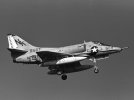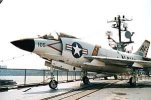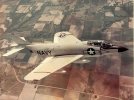Hozer, want to thank you for sharing that 60B "quirk" with us... pre-breakfast, barrfff!Don't try to crap out of the hellhole on a 60B. No matter how bad the pork adobo was....
Maybe more physics than an a "quirk".


BzB
Hozer, want to thank you for sharing that 60B "quirk" with us... pre-breakfast, barrfff!Don't try to crap out of the hellhole on a 60B. No matter how bad the pork adobo was....
Maybe more physics than an a "quirk".


Ditto!Hozer, want to thank you for sharing that 60B "quirk" with us... pre-breakfast, barrfff!
BzB

I can certainly see how that happened to your former CO...easy thing to do. Also, wasn't part of that inadvertent torp launch deal the fact that while launching a buoy, the ATO would be looking out the left window (while hopefully mashing the buoy button and not the torp button) to confirm that the buoy had cleared the launcher? It's all coming back now...sheesh!
Sounds like the Skyhawk, in that we flew landing approaches w/ speedbrakes out, to keep our RPM higher for quicker engine acceleration to 100% in case of waveoff or bolter. Of course you had to program yourself to close the speedbrakes instantly upon initiating W/O, or at touchdown on a CV landing!Cat, over a few drinks with a Tomcat driver a while back, I remember him saying that because of the slow spool rate of the TF-30s, you had to keep a high AOA behind the boat in the Alphas to maintain a higher RPM for power inputs. Any truth to that?


A couple of the top of my head:
F-14- Instead of using DLC in working off a "high" coming aboard, a lot of guys just quickly moved the stick left and right. The drag from the spoilers flipping up and down quickly worked much better than the DLC.
F-4- In the landing configuration at certain power settings, the J-79s made a howling, screaming, pitch changing sound that sounded like 1,000 howling demons. One day after doing touch and go's, the skipper called me in. It seemed that I had been flying over a Catholic elementary school on downwind. The head nun had called to complain. Apparently every time I flew overhead I was at the certain power setting where the bleeds open and shut, causing the screaming. She had all the kids under desks, thinking I was about to crash. So I had to go to the school to apologize in person.
Prowler and Goosehawk both do the same thing for the same reason.Sounds like the Skyhawk, in that we flew landing approaches w/ speedbrakes out, to keep our RPM higher for quicker engine acceleration to 100% in case of waveoff or bolter. Of course you had to program yourself to close the speedbrakes instantly upon initiating W/O, or at touchdown on a CV landing!
BzB
They did try putting anti skid paint on the inner starboard wing, but it was only marginally successful. Speaking of oil, adding engine oil to the J-52 powered A-4 was no picnic. If it had been over serviced by the previous plane captain, then the drain bottle would overflow down to your armpits, before you had a chance to get out of the way.A-4 ground crew point of view... I hated those f'ing ladders. Not to mention those oily starboard wings (slid down and fell on my keister one night during a preflight).
Without our stellar Plane Captains, we'd never have gotten airborne. Long time no see brownshoe & Corkyboy!They did try putting anti skid paint on the inner starboard wing, but it was only marginally successful. Speaking of oil, adding engine oil to the J-52 powered A-4 was no picnic. If it had been over serviced by the previous plane captain, then the drain bottle would overflow down to your armpits, before you had a chance to get out of the way.

.......because of the slow spool rate of the TF-30s, u had to keep a high AOA .......
You think the Phantom looked like an overr0tation off the cat, you should have seen it's MacDonnell "Daddy", the [horribly underpowered] Demon. I made 2 cruises with a Demon Squadron in the wing, and every launch, AB or not... seemed like the start of an epic stall/spin fiasco. From Vulture's Row, each Demon upon full rotation looked like a plan view from above. Although I never saw, or even heard of a full stall on a Demon catshot, It never failed to put my heart in my throat each time.Also, a lot of Phantom vids I've seen have them rocketing off the bow with the extended nose strut and what seems like an overrotation off the cat...was that a technique specific to that airplane?




Crap, Walt, just think, that was about 50 years ago. Ah the heck with it... let's go get some midrats.They did try putting anti skid paint on the inner starboard wing, but it was only marginally successful. Speaking of oil, adding engine oil to the J-52 powered A-4 was no picnic. If it had been over serviced by the previous plane captain, then the drain bottle would overflow down to your armpits, before you had a chance to get out of the way.

let's go get some midrats.
